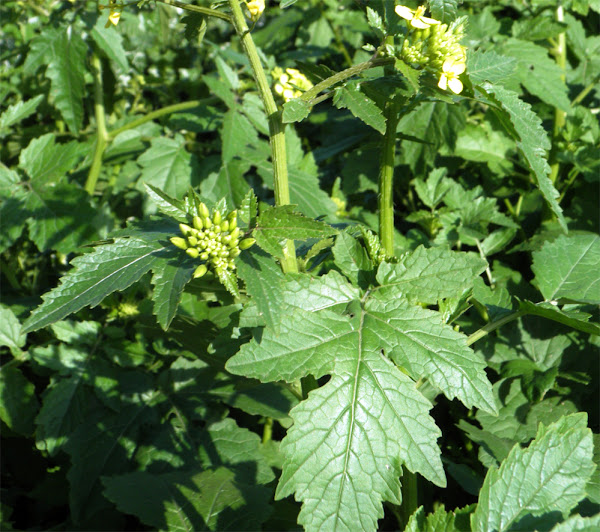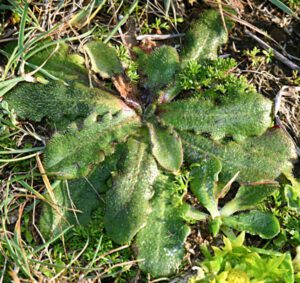Growing mustard in home garden is relatively easy and simple. And you can start growing mustard plants for both seeds and the greens.
The plant is versatile and can be grown as a vegetable and eaten like other greens. Or you can also harvest the seeds if the plants are allowed to flower and go to seed.
The mustard (Sinapis alba) is an annual plant of the family Brassicaceae. It was probably originated in the Mediterranean region, but today it is widespread throughout the world.
The mustard is actually an ancient plant and very popular among the home gardeners.
Both the greens and oil are nutritious. The mustard seed oil contains less or no cholesterol, only trace amounts of vegetable fat and about 25 percent protein.
While the greens contain vitamin B and some minerals such as calcium, magnesium and phosphorus.
How to Grow Mustard
The mustard plants are very easy to grow and the plants can produce seeds in as few as 60 days. And the greens become ready much earlier.
However, here we are describing more information about growing mustard in your home garden.
Select a Good Location
Select a good location in your garden for growing mustard. The mustard plants generally grow best in full sunny areas with good drainage system.
Prepare the Soil
The mustard plants can be grown in almost all types of soil. But they grow faster and produce more seeds in well-prepared, well-drained and soil with a pH level no less than 6.0.
For preparing the soil, till the soil first and then add organic materials into it (such as, well-rotted manure or fully decomposed compost).
Choose a Variety
There are many different mustard varieties available throughout the world to choose from. But you should choose a variety depending on it’s availability in your area.
Consult with some existing home gardeners in your area for having recommendation while choosing a variety.

Some popular mustard varieties are Dijon, English, French, American Yellow, Spicy Brown, Beer, Honey, Whose Grain, Hot Pepper, Hot, Spirited and Fruit mustard.
Purchase Seeds
Today, mustard is available throughout the world. So, the seeds should be easily available in your area. Just visit any of your nearest market and purchase the seeds.
Best Time for Growing Mustard
The mustard plants grow well in cool weather, and they can even tolerate light frost.
Springtime is considered good for sowing the seeds in the Northern areas.
And sowing the seeds between September and October is good for fall or winter harvest in the Southern Areas.
Planting
The mustard plants are grown from seeds. You can either sow the seeds directly into the prepared bed or sow in rows.
For growing mustard in the Northern areas, sow the seeds about 3 weeks earlier your last frost date.
And sow within September and October for growing the plants in the Southern areas.
For planting the seeds in rows, mark several rows in the prepared bed to about 1 ft apart.
And then sow seeds about 1 inch apart, and thin the seedlings later to about 6 inches apart.
Watering immediately after sowing the seeds will result faster germination of the seeds.
Caring
The mustard plants are very easy to grow and they generally require less care and management. They will grow fine if the weather is cool, but will bolt faster in warmer weather.
However, taking additional care will help the plants to grow better. Here we are describing more about additional caring for growing mustard.
Fertilizing: The mustard plants generally don’t require using additional fertilizers for better growth. They will grow fine if you have prepared the soil by tilling and adding organic materials into it.
Watering: The mustard plants require moist soil for better growth. So, regular watering is a must for growing mustard plants. The plants should receive about 2 inches of water per week.
Mulching & Controlling Weeds: Weeds consume nutrients from the soil, so controlling them is important. Mulching can help to get your garden free from weeds. Mulching also help to retain moisture into the soil.
Thinning: The mustard plants generally don’t grow well if they are overcrowded. So thinning them is important. Thin the plants to about 6 inches apart when they are about 3-4 inches tall.
Pests and Diseases
Diseases are less, but some pests can create problems for your mustard plants. Use homemade organic insecticides for getting rid of most of the pests.
Harvesting
You can start harvesting the greens when the plants are about 10-12 inches tall (depends on the variety). And you can expect harvesting the seeds when the leaves of the plants start to turn yellow.
The best time to harvest the seeds when the color of the pods change from green to brown (before they are fully ripe).
Harvesting during this period is important, because the pods will shatter and the seeds will blow into every corner of your garden.
These are the common ways for growing mustard organically in home garden. Hope you have enjoyed this guide! Good luck & happy gardening 🙂






